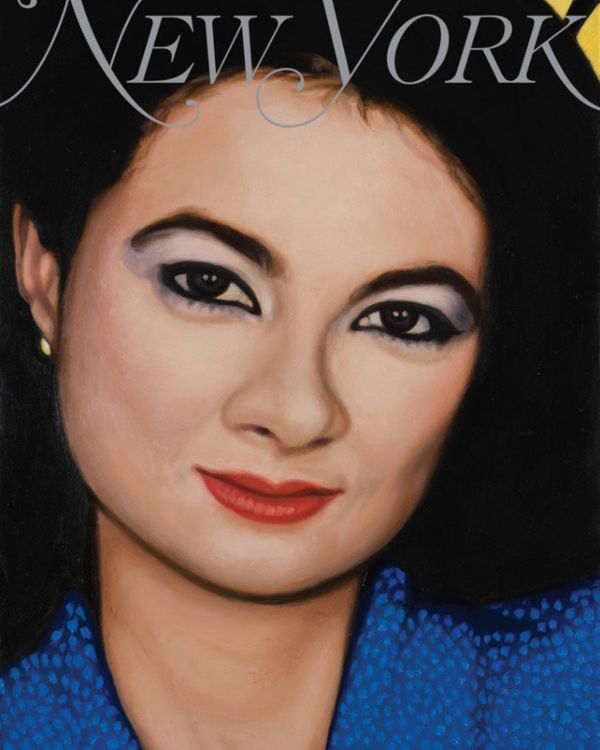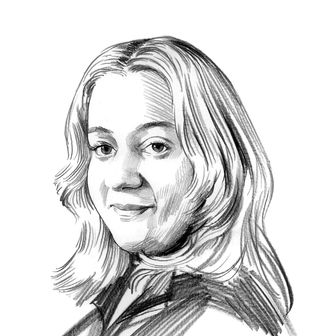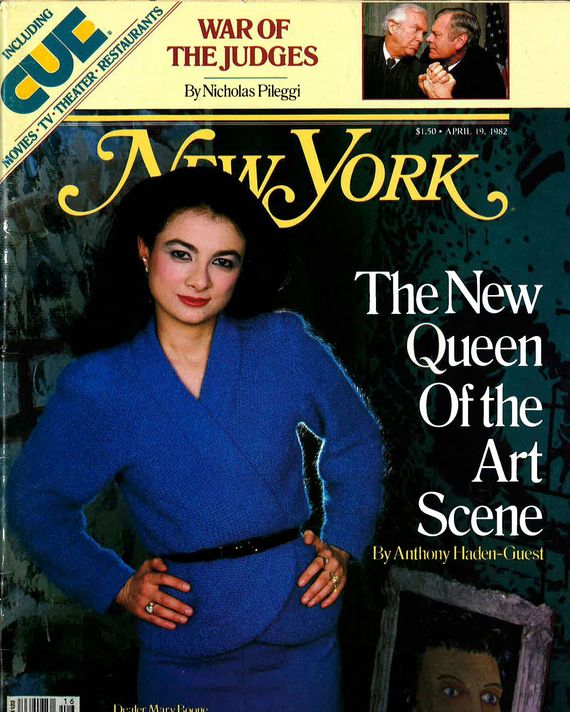
As part of New York Magazine’s 50th anniversary cover project, contemporary artist Richard Phillips decided to recreate our 1982 “New Queen of the Art Scene” cover with prolific dealer and gallerist Mary Boone — who, in stunning art-world news, recently pled guilty to tax fraud. Here, Phillips reminisces about the role Boone played in the evolution of his career, why he chose to duplicate that original Boone cover more than 30 years later, and how her crimes might affect her legacy.
The 1982 cover was a turning point for me and my artistic life. I was in a landscape painting program in Long Island, and when I became aware of that cover — I believe it came out in the spring and I was there in the summer — I’d just gotten into art school and I wasn’t super aware of contemporary art. Upon reading about Mary and her ascension to being the queen of the art scene, I decided to take the train into the city and see what it was all about. It was very important to me, in the sense that it essentially introduced me to contemporary art. I went in the city, visited her gallery, which was on West Broadway at the time. It was from that point that I began my journey as a contemporary artist. When I was asked to do this 50th anniversary project, it was a no-doubter. It was the cover that made the most difference in my life. It was also an homage to the aspect of a female dealer gaining that type of authority and power in a male-dominated art world.
My decision came well before any of the information came out about Mary’s IRS difficulties. In a lot of ways, my paintings have motion in that way. I painted Lindsay Lohan and suddenly she ended up getting into trouble. I opened a show in 2001, three days before September 11, with 14-foot wide painting of President Bush. There’s a history of post-fact contextualization in my paintings that have definitely changed meaning.
There’s no doubt that she’s done a lot in the art world and she’s really contributed by highlighting and exhibiting and putting up fantastic exhibitions for over three decades. I’d like that to be part of the focus. Undoubtedly, what she’s going through now will be a part of the focus, too. It’s never just one or the other. There’s a dynamic and a dialectic that’s involved with the outer limits and echelons in the art world. People do get caught out on the limit of what is permissible, I suppose. On one hand, we had to assess the accomplishment. On the other hand, we have to look at the reality of what is happening in the present time. It’s an opportunity to focus on both subjects simultaneously. Of course, it is a complex art world that had these positive and negative effects. In my paintings, there’s positive and negative readings, and I have to embrace both.
However, I feel like her accomplishments and the great shows that she’s put on stand on their own. They’re well-documented, and the impact will remain. It’s one of the great galleries. The art world will evolve, but Mary’s impact and her place in history is certain. These tax problems are something that may have an affect towards the future, but I don’t think it’ll affect the uncountable contributions she’s made in the past.



